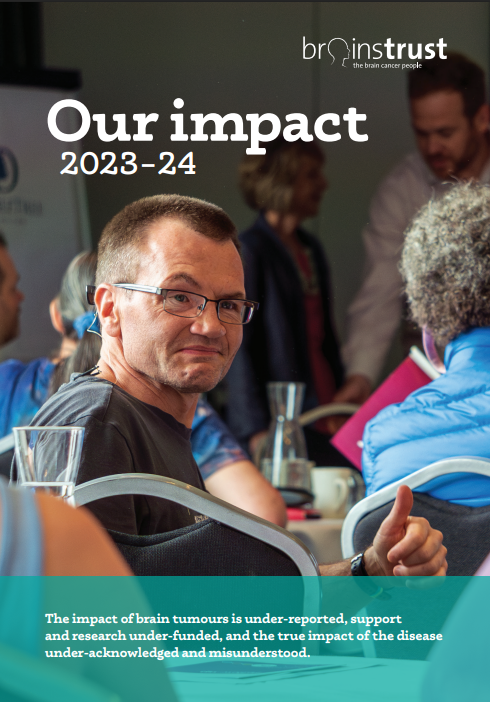Acoustic Neuroma patient and carer stories
Hearing from others who know what it’s like to receive and Acoustic Neuroma diagnosis, or know what it’s like to love someone with a diagnosis, may help you feel less alone. On this page we’re collecting your Acoustic Neuroma stories, as written by you so that the community has a space where they know they are not alone.
If you would like to share your story, please speak to your support specialist.
Lin’s story
Lin from Kent was diagnosed with an Acoustic Neuroma in September 2020. Nearly two years on, Lin shares her story and experiences of life with an Acoustic Neuroma following recent radiosurgery.
“If you are waiting for treatment or lucky enough to be given a choice of treatments my advice would be to find out all you can about the options, know there is support from brainstrust to help you feel okay about what is ahead, remember to breathe and that you are not alone.”

Helen’s story
Helen is 51 and married with two boys aged 21 & 15 living in Staffordshire. She loves the outdoors & spending time in green spaces. In 2020, Helen was diagnosed with an Acoustic Neuroma, and is sharing her experience of living with an Acoustic Neuroma.
“I would like the world to know that life with a brain tumour is hard. Really hard. It is a rollercoaster ride full of immense lows, highs, and often long waits! I find it to be both exhausting and exhilarating. I guess the exhilarating part is due to the realisation that despite my diagnosis there is still joy in living.”

Andrew’s story
Andrew received an Acoustic Neuroma diagnosis at 40 and underwent surgery in 2017. It was upon returning to work that Andrew realised he needed support as fatigue proved incredibly hard to deal with. In this article Andrew has shared his experience of how opening up to the brain tumour community has helped him manage his fatigue in a way that allows him to live life to the full.
“At first, I didn’t think I needed help from charities, but when I got back to work, I realised that I did need help. Fatigue was the biggest issue for me. I went to a conference by BANA and realised how important it is to talk to people. It is life changing. People with Acoustic Neuroma always get dismissed because it’s “benign”. It was through BANA that I discovered brainstrust – someone talked about the fatigue webinar as fatigue is something that affects me.”

Subscribe to our mailing list to hear about all the latest news, events, research and resources.











